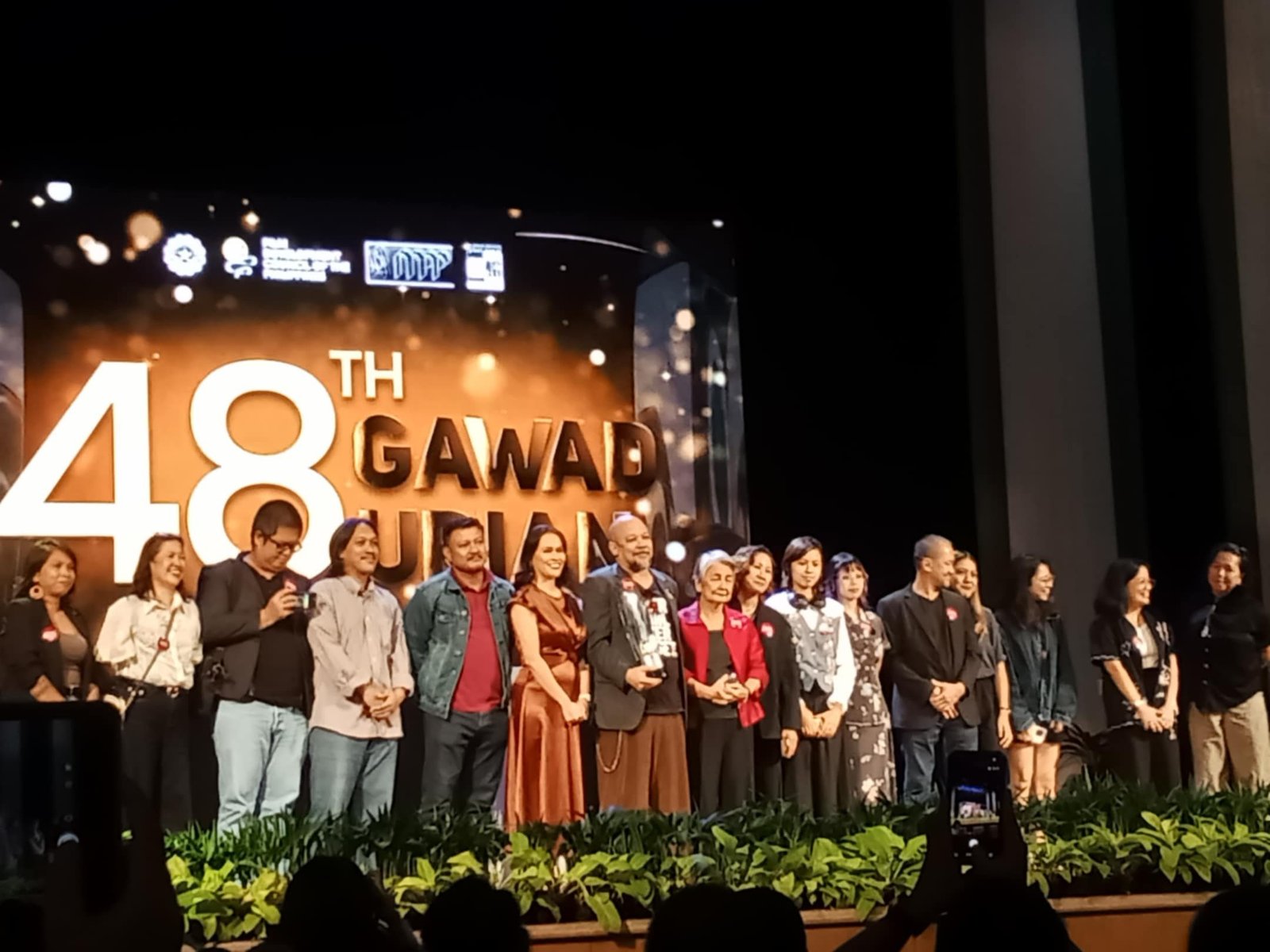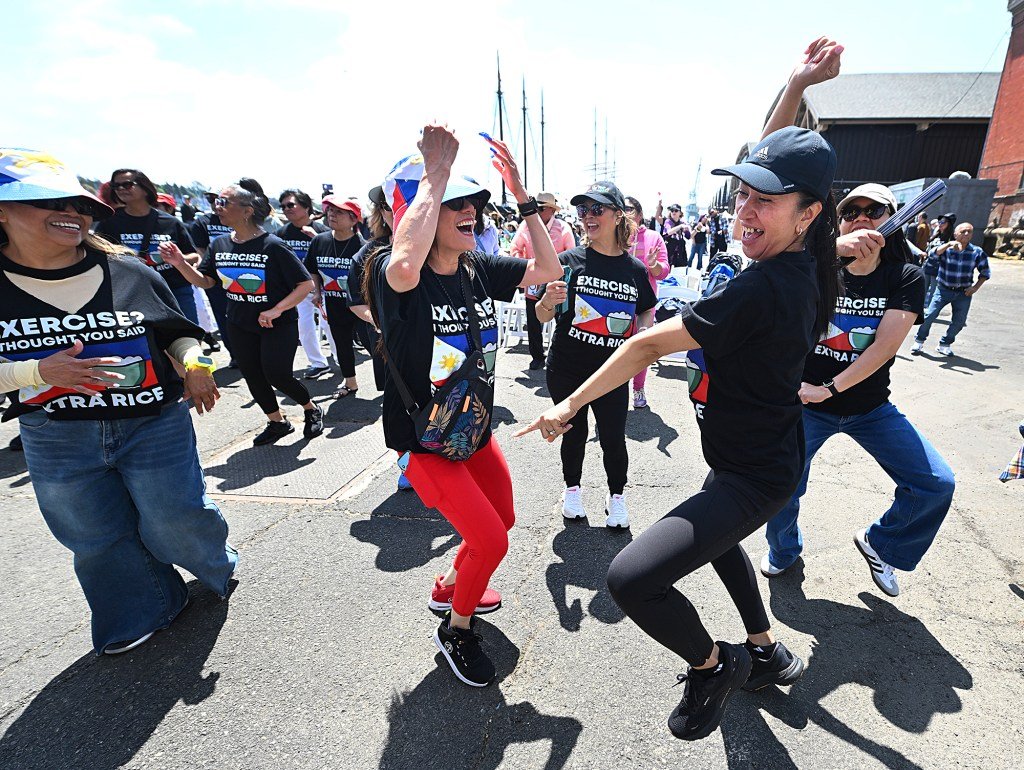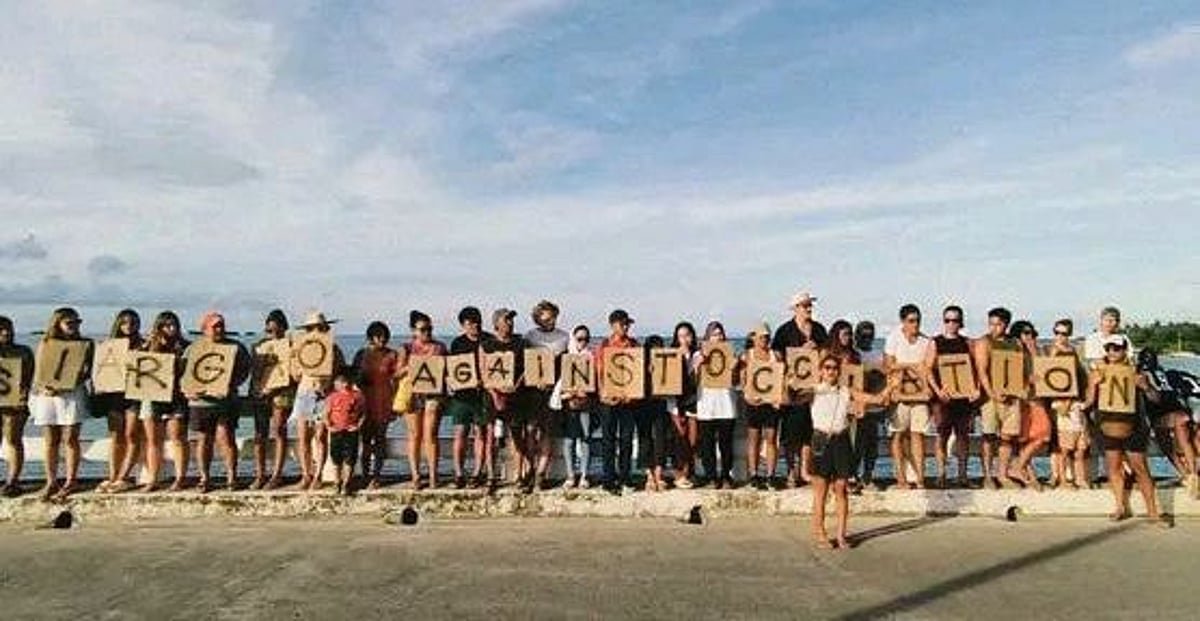“Bebot” blasted over the sound system, the national flag of the Philippines rippled in the breeze, the smell of lumpia filled the air and Pista Sa Nayon began in Vallejo Saturday.
“Sharing the Map of our Motherland” was the theme of this year’s 39th Annual Pista Sa Nayon festival, a day-long celebration of Filipino history and culture held in Mare Island and attended by thousands.
Stretching 20 feet long, in hues of vivid blue, yellow and orange, a map of the Philippines was a standout attraction at the event. The Philippines is made up of 7,741 islands grouped into three main areas: Luzon, Visayas and Mindanao.
Marchers proudly displayed flags bearing the names of all three regions in the procession that began the event. “Bebot,” written by Filipino-American rapper apl.de.ap and will.i.am of the Black-Eyed Peas, was released in 2005 and became a Filipino anthem. It is written entirely in Tagalog (well, except for “chicken adobo”), and repeats the refrain, “Filipino! Filipino!”

Twenty-three percent of the 123,475 people living in Vallejo are Asian, and it appears that many of them are Filipino, based on the number of people who showed up – and the fullness of the parking lots.
“We had to park far away,” noted Domingo Damian of Vallejo, who attended with his wife Fe. “It just goes to show we have a big Filipino community here.”
The two moved to Vallejo last July from Daly City, another place with a large Filipino community that was featured in the 2022 movie “Easter Sunday.” Damian said he loves Vallejo. He’s from Daly City, but his family originated in Luzon, he said.
His favorite parts of the event?
“The entertainment. The shops. The food,” he said, with the emphasis on the last element.
A well-known favorite, lumpia, as well as all kinds of pancit, adobo and other Filipino fare was available at food trucks lined up at the event.
Damian said his favorite is silog “because there are so many varieties. It’s garlic fried rice and an egg,” with all kinds of other different ingredients.
Taylor Crowder, who was standing in line at a food truck, said her favorite is sisig nachos, a fusion dish that combines the Filipino dish sisig with the classic nachos. Crowder, who has lived in Vallejo all her life, said her family was originally from Davao City, which is renowned as the jewel of Mindanao. She was born in the United States. Her aunt, Ernestine Crowder, produced the procession.
Vendors sold clothing and other items at dozens of tables, with music and dance on the bill including Parangal, Kariktan and Bibak dance groups. Bay Area Filipina rapper Ruby Ibarra, who recently won NPR’s Tiny Desk Contest, was scheduled to perform at 5 p.m., after this paper went to press.
In Vallejo, which has been regularly ranked as one of the most racially diverse cities in the United States, sharing Filipino culture and history is not something to be taken lightly, festival producer Jen Mojica told the Times-Herald this week. “It’s the biggest honor and it’s the biggest opportunity to give it our best.”
Zumba is said to have originated in Colombia, but a Zumba flash mob and Zumbanatics were both on the bill. For the uninitiated, Zumba is a popular Latin dance exercise class held at gyms and fitness clubs all over the world.
As music blasted, members of the audience and dancers rocked out in front of the stage. Right by the dancers, but maintaining her universally recognized dignity, was a well-known Vallejoan: None other than City Council Member Tonia Lediju.











